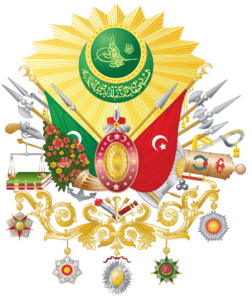Overview: Ottoman Empire
 The Ottoman Empire was approaching its apogee at the time of the Expulsion. By the 1560s its territories included most of North Africa and the Middle East, as well as the Balkans and Asia Minor. In the commercial centers of this empire – Istanbul, Salonica, Adrianople, and Izmir – as well as in the holy cities of Palestine, Jews of every ethnic background settled alongside the “native” Jews. But the settlement of the Spanish exiles after 1492 had special importance. The number of exiles who settled there cannot even be estimated, though it was certainly quite large. In time, the Sephardim came to dominate the Jewish communities throughout Ottoman lands, and profoundly influenced their way of life. Not only Jewish exiles, but conversos as well sought to flee to Ottoman lands, where they could return to Jewish practice without any fear.
The Ottoman Empire was approaching its apogee at the time of the Expulsion. By the 1560s its territories included most of North Africa and the Middle East, as well as the Balkans and Asia Minor. In the commercial centers of this empire – Istanbul, Salonica, Adrianople, and Izmir – as well as in the holy cities of Palestine, Jews of every ethnic background settled alongside the “native” Jews. But the settlement of the Spanish exiles after 1492 had special importance. The number of exiles who settled there cannot even be estimated, though it was certainly quite large. In time, the Sephardim came to dominate the Jewish communities throughout Ottoman lands, and profoundly influenced their way of life. Not only Jewish exiles, but conversos as well sought to flee to Ottoman lands, where they could return to Jewish practice without any fear.
The flourishing economy of the Ottoman Empire in the sixteenth century produced remarkably good conditions for the Jews. Since the Empire was in a period of rapid expansion, Jewish immigrants were not viewed as an intolerable element of competition. And as merely one more minority group in a vast multi-ethnic empire, they were not a conspicuously alien element. Many accounts of exile attest to the favorable reception they received in this region. This did not go unnoticed, of course, in Venice, where rapid Ottoman expansion was viewed with great unease. A report of a Venetian official from 1507 noted that “in Salonica [the Jews] produce great quantities of textiles…There are ten thousand Jewish households there, as they told me when I was there. They engage in woollen manufacture and produce quantities of textiles that cannot be described. They also manufacture cannons as well as many other things which the mind of man has devised.”
The chief destinations of Jewish emigres within the Ottoman Empire were Salonica and Istanbul. With an estimated Jewish population of 30,000 persons, Istanbul’s community became the largest in the world in the sixteenth century. But the emigres settled elsewhere in the empire as well – in towns and villages throughout the Balkans and Asia Minor, usually in port cities but also in interior towns like Adrianople, Skopje and Monastir, where some local (Romaniot) Jews had already lived. We hear that in the town Magnesia, not far from Izmir, “there is not a single Jew in the town who is a native Jew, unless it is someone passing through; the Sephardim came and settled there by themselves, and there is no stranger among them.”
In the period after the Expulsion, some exiles made their way to Egypt, Syria and the Holy Land. Their numbers were small, though, because these areas were held by the Mamlukes, and were quite inhospitable places for settlement. This changed, however, in 1516-1517, with the Ottoman conquest of these territories. Exiles, descendants of exiles and conversos began making their way to ancient Jewish communities in the east- Cairo and Alexandria in Egypt, Damascus, Halab and Beirut in Syria, and Jerusalem and Safed in Eretz Israel. In a colorful and probably exaggerated account from 1517-1523, an Ashkenazic author writes as follows-
“In the time of the great Rabbi Ovadia [of Bertinora] the prayers were said according to the rite of the Mustarabim [indigenous Jews] who follow Maimonides in matters of custom and law. But now that the Sephardim have been added to the population, they have practically eliminated every other usage, and they do as they please. Three of the cantors are Sephardim and one is Mustarab, and each does as he pleases.”
We have especially good data on the growth of Sephardic settlement in Safed in the sixteenth century, the period of this community’s great material and spiritual flowering. Turkish tax records show that in 1525 there were some 48 European (probably Spanish-Jewish) families in Safed; by 1555 there were 143 Portuguese-Jewish and 324 Spanish-Jewish households. Incidentally, this data illustrates that the movement of Iberian Jews through the Mediterranean was an extended one that continued for many years after the expulsion.



